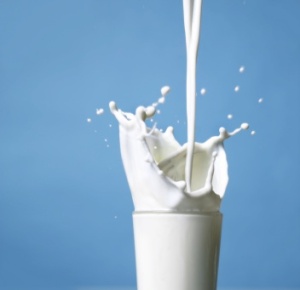Got Milk?
Remember the old ad “Milk does a Body Good!” ? Then other sources say that Milk is bad for you.
Let’s examine the facts so you can decide for yourself.
First of all, what is milk for?
Milk is a maternal lactating secretion, a short-term nutrient for newborns. Nothing more, nothing less.
Human breast milk consists of: 90% water, nutrient proteins, non-protein nitrogen compounds, lipids, oligosaccharides, vitamins, minerals, hormones, enzymes, growth factors and protective agents.
Invariably, the mother of any mammal provides her milk for only a short period of time immediately after birth. When the time comes for ‘weaning’, the young offspring is introduced to the proper food for that species of mammal. Question is would a human’s milk be good for a baby cow or goat?
Human milk is for human infants, dogs’ milk is for pups, cows’ milk is for calves, cats’ milk is for kittens, and so on.
This is the udder truth (sorry couldn’t help myself!), the way nature intends it. 🙂
So why then do we drink milk from a cow and think it is good for us? Sure we get needed calcium from it. Plus cow’s milk is fortified with D and B vitamins and water. But doesn’t “fortified” mean “added” ?
The sun is an excellent source of vitamin D, also fish like sardines, herring, salmon and tuna. So do we really need to get it from milk?
The question is: should we really be drinking cows milk? Is it “good” or “bad” for us?
I used to love milk! Especially with yummy chocolate chip cookies, or in my morning cereal. But once I became an adult I found out that milk didn’t love me. 😦 The term for that is Lactose Intolerant.
Did you know that at least half of the adult humans on this earth are lactose intolerant? Whew, now I don’t feel so alone! Most of them can’t drink milk because it makes them ill.
Certain races, namely blacks are up to 90% lactose intolerant as adults. Caucasians are 20 to 40% lactose intolerant. Orientals are midway between the above two groups. Most American Indians cannot tolerate milk either. Diarrhea, gas and abdominal cramps are the results of substantial milk intake in such persons. These differences are due to genetics. If your ancestors were from Northern Europe let’s say, and for centuries drank milk, then you are more likely to be able to drink milk without any problem. But if your ancestors came from somewhere where there were no cows, your genetics would not be tolerant to milk. Does that make sense?
How about osteoporosis? Don’t we need calcium to prevent it?
Where do we get calcium from? From the same place that cow get calcium, mainly from leafy vegetables. After all, elephants and rhinos develop their huge bones (after being weaned) by eating green leafy plants, so do horses. Whereas carnivorous animals do fine without leafy plants.
The key is not to look at calcium, but look at protein. Consider these two contrasting groups of people; Eskimos have an exceptionally high protein intake estimated at 25 percent of total calories. They also have a high calcium intake of 2,500 mg/day. But their percentage of osteoporosis is among the worst in the world. Another other group are the Bantus of South Africa. They have a 12 percent protein diet, mostly plant protein, and only 200 to 350mg/day of calcium. But the majority of their women have no osteoporosis despite bearing six or more children and nursing them for prolonged periods.
Here is an alternative for those of you that can’t handle cow’s milk: Goat’s Milk
1) Goat’s milk is less allergic – It does not contain the complex protein that stimulate allergic reactions to cow’s milk.
2) Goat’s milk does not suppress the immune system.
3) Goat’s milk is easier to digest than cow’s milk (An old statistic showed that goat’s milk will digest in a baby’s stomach in 20 minutes, whereas pasteurized cow’s milk takes eight hours.)
4) Goat’s milk has more buffering capacity than over the counter antacids.
5) Goat’s milk alkalinizes the digestive system. It actually contains an alkaline ash, and it does not produce acid in the intestinal system.
6) Its fat globules are one ninth the size as cow’s milk, making it easier to digest.
What is best for infants and children? Breast feeding of course is best, as mother’s milk contains a balance of fats, carbohydrates and proteins for the newborn. It also contains the perfect mix and amount of vitamins for the baby’s needs, and immunological agents that will help the newborn fight bacteria, viruses and other infections.
Since infants depend so much on milk, they can develop an iron deficiency if they consume cow, goat or soy beverage. Did you know that between 20%-50% of children with cow milk protein intolerance will also react adversely to soy proteins? Goat milk is a natural milk that children like and can consume comfortably, even if they are sensitive to cow’s milk and/or soy milk. For menopausal women, goat milk provides 13% more calcium than cow’s milk and can be consumed comfortably even by those women with milk sensitivity.





Your Thoughts